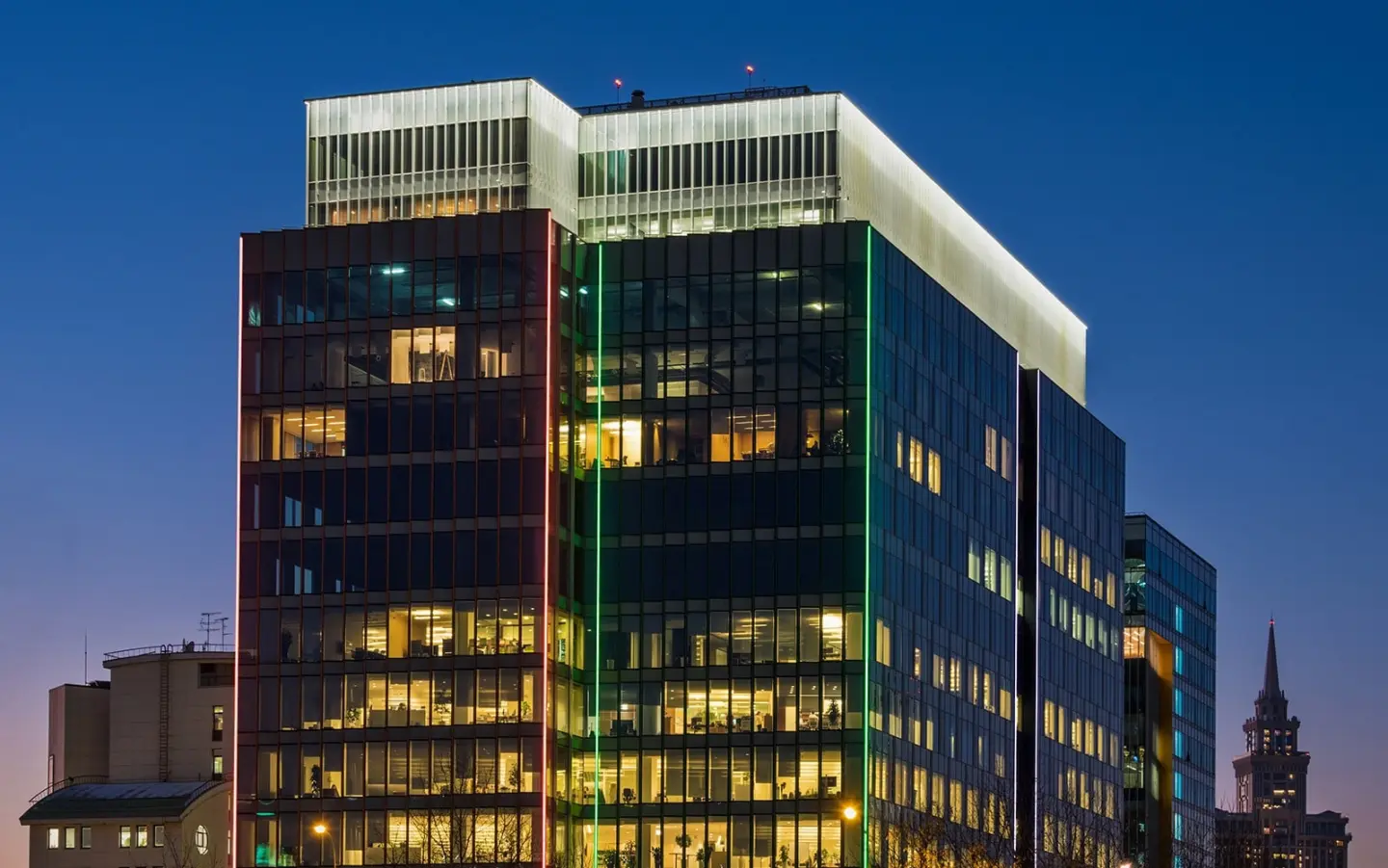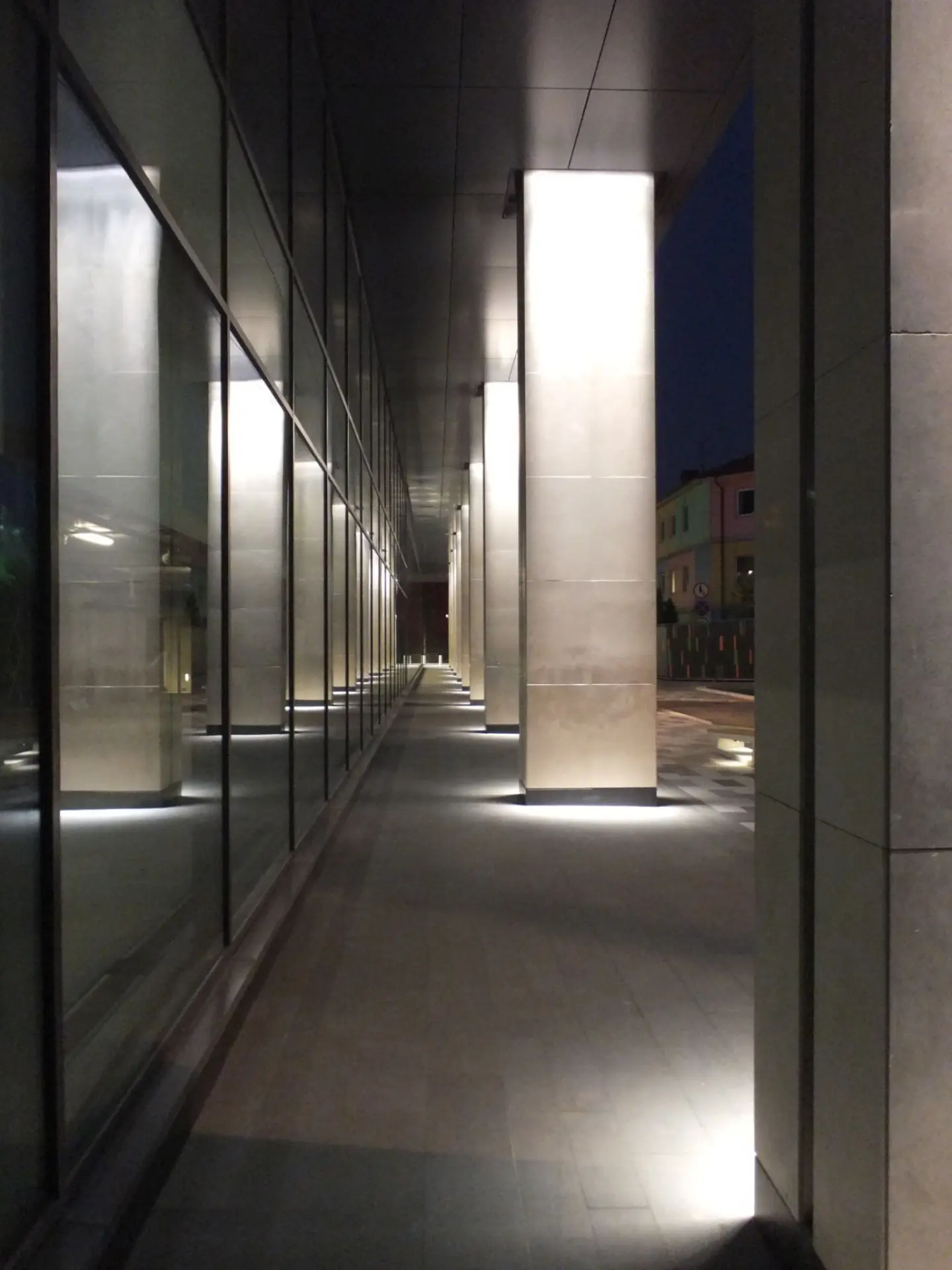
Arcus III, Moscow

Creating a beacon in the Moscow skyline

Client
AB Developments
Location
Moscow, Russia
Manufacturer
Whitegoods, XAL, Mackwell, Flos, Riegens, Ecosense, Woodhouse, iGuzzini, Insta, Hess, GE
Suppliers
Atrium, Architainment, Lighting Technologies,
Architect
Aukett Swanke
LAPD worked on the interior, façade and landscaped areas of this executive office tower in Moscow.
The approach to the façade lighting created a cage of light around the building. The cage connected the top and the bottom of the building, therefore giving the building visibility from afar. So, the entire top element became a beacon-like lantern with prominence within the Moscow skyline. Cool white linear LED lighting, with a carefully selected beam width, light the glass fins cladding the building top.
We carried out tests on different types of glass and different LED optics. As a result, we ensured that the fins held as much light as possible all the way down their length. Clear glass with a frosted interlayer produced the best effect and the best structural performance.
The architectural lighting design consists of eight lines of light running down the façade, highlighting architectural details while connecting the lantern top with the base of the building. Cool white light connected the lantern with the building base, forming the cage-like aesthetic.
We specified the linear LEDs from Insta with RGB control. Consequently, on the client’s request, we were able to adjust the lines of light that framed the coloured expanses of façade to match the vivid glazing colours.
Lastly, a control system was specified to enable these lines of light to chase, pulse, change colour and create different effects for special events.
More Projects